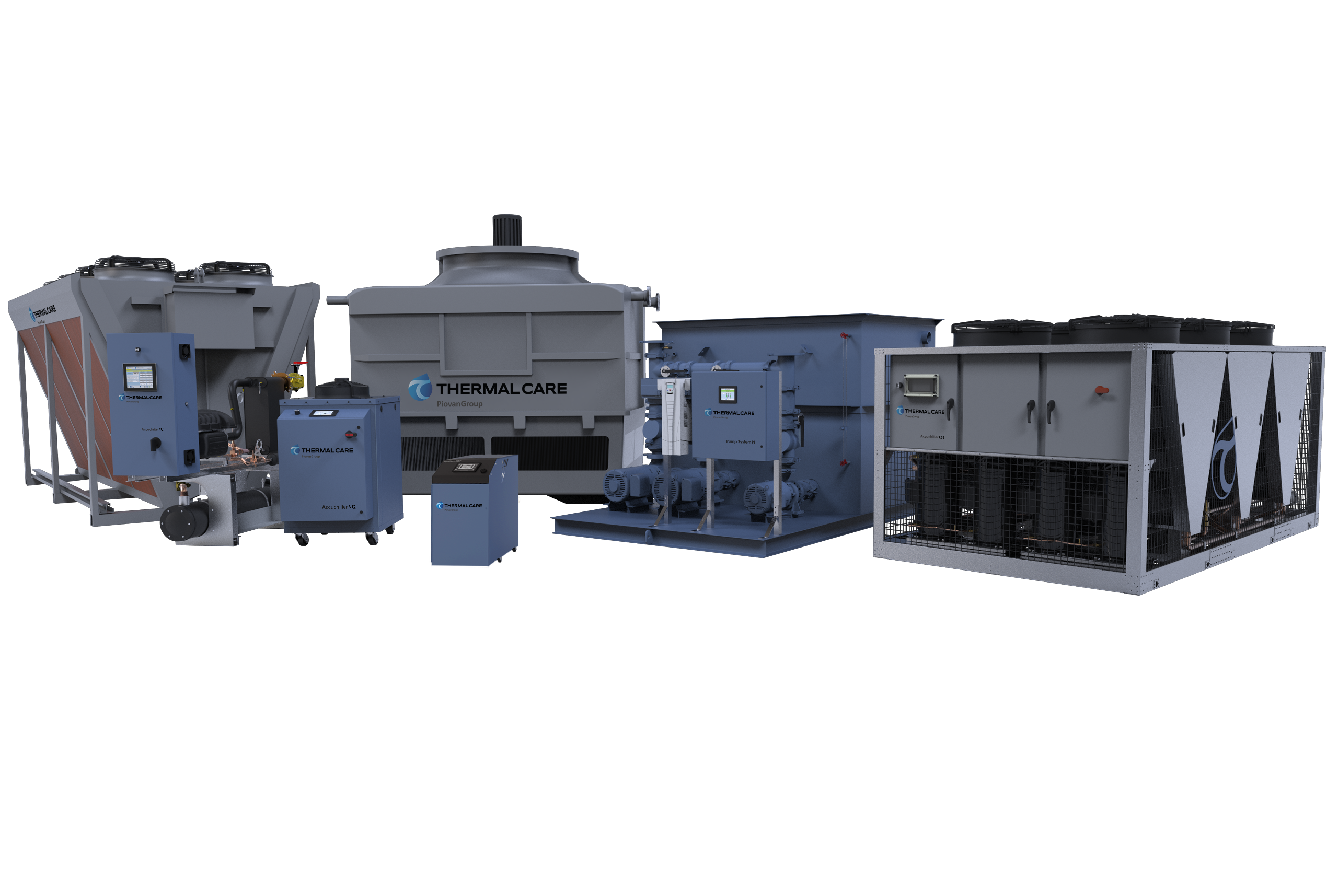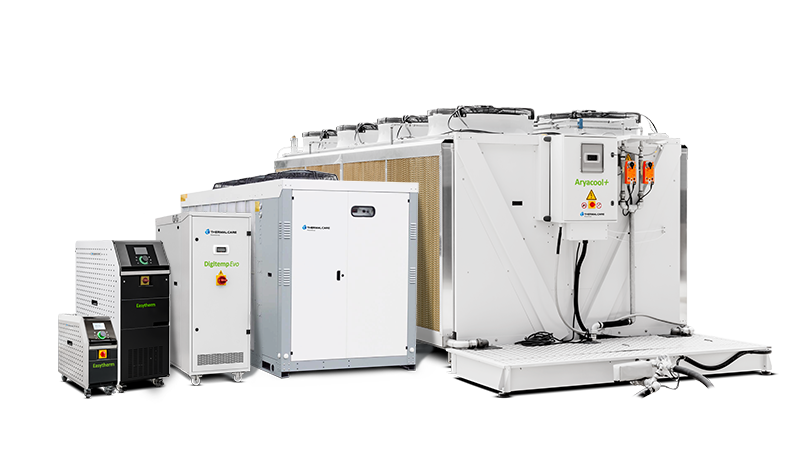Manufacturers constantly seek to optimize their manufacturing process to reduce costs, improve quality, increase energy efficiency and reduce the impact of their operations on the environment. The challenges in many instances, lies in knowing where to start and how to go about making wise changes that positively impact the manufacturing process. One of the areas often overlooked is industrial process fluid cooling systems.
Selecting the Process Fluid
The most common fluid for process cooling systems is water. It is widely available, low-cost, non-hazardous, and is very efficient at removing heat. With an effective temperature range of 40°F to 200°F, water is the first fluid to consider.
When operating temperatures must be lower than 40°F additives such as Ethylene or Propylene Glycol are often times added to prevent freezing. These additives, however, reduce the heat transfer efficiencies and increase pumping power use. For temperatures higher than 200°F heat transfer oils are used They have a fraction of the heat transfer capacity of water and are less efficient and more expensive to implement than water.
There are many types of cooling systems, but in the end, they all do the same thing: they remove the heat from the process and transfers it into the air.
What is the right temperature?
This is one of the most common questions and surprisingly colder is not always better. In most process applications process cooling fluid is pumped through some type of heat exchanger. Heat exchangers are optimized to operate at a specific temperature and flow. If these criteria are known, they are the best place to start when considering what temperature is the right one for your process. If the design is unknown it is common to find a similar process and use the same fluid temperatures.
As stated earlier, it is important to remember colder is not always better. The colder the process fluid is, the more energy it takes to create it. In addition if the temperature gets close to the dew point, care must be taken to avoid condensation. Condensation on a glass of ice tea in the summer is a minor annoyance. In a process, anything that is not properly insulated becomes a dripping mess. In addition to the mess, condensation puts a huge load on the cooling system which wastes energy and drives up cost.
When a process is not operating as fast or as efficiently as desired the first thing most people think to try is to reduce the process fluid temperature. This is not necessarily the right choice. The ability of the process cooling system to remove heat is based not only on the temperature of the fluid but the flow rate.
What is the right flow?
The process flow is equally - if not more - important than the temperature. The higher the flow, the more likely heat transfer will occur. There are two types of flow that can occur inside a pipe or heat exchanger: laminar and turbulent.
Laminar flow is slower and fluids pass along the walls of pipes in a parallel direction with very little to no mixing occurring. With this type of flow heat transfer is limited to only that fluid which is right next to the wall of the pipe or heat exchanger surface.
Turbulent flow occurs when the velocity of the fluid increases. The streams of fluid flow start to destabilize and more and more mixing occurs. In this case, fluid is warmed by the surface of the pipe or heat exchanger but then is mixed with the cooler fluid in the center of the pipe. This action pulls more heat off the side wall of the pipe or heat exchanger surface. The net effect is a significant increase in the amount of heat transfer to the process fluid.
What is the right cooling system?
There are many types of cooling systems but in the end they all do the same thing, they remove the heat from the process and put it into the air. The three main types of cooling systems used in process cooling applications are: fluid coolers, cooling towers, and chillers.

Two types of flow can occur inside a pipe or heat exchanger: laminar and turbulent. The higher the flow, the more likely heat transfer will occur.

Fluid coolers use fans to move air over a coil that has fins on it. Inside the coil is the process fluid. As the air passes over the fins it removes heat from the fluid. If the ambient air is not cool enough to achieve the temperatures needed in summer, an adiabatic pad is placed in the incoming air-stream that pre-cools the air before it passes over the coil. This type of system can typically produce process fluid temperature of 85°F in the summer.

Cooling towers use the principle of evaporation to cool fluids. Most cooling towers directly cool water by pumping it through a section of plastic sheets called fill. As the water passes over the fill sheets air is moved through the cooling tower which evaporates some water and cools the water that remains. Sometimes cooling towers isolate the process fluid from the fluid that is evaporated. These are called evaporative fluid coolers.

When the process fluid temperature must be cooler, a chiller is used. The chiller works on the principle of compressing and expanding a refrigerant gas. Essentially, it uses the heat from the process fluid to boil or evaporate the refrigerant. Air-cooled chillers use air, usually 95°F or cooler, to condense the refrigerant. Water-cooled chillers typically use 85°F or cooler water, oftentimes from a cooling tower system, to condense the refrigerant.

Due to the wide range of options and various design, it is best to partner with qualified heat transfer system specialist to assist with designing a system that provides the right fluid at the right temperature and flow using a cooling system that is optimized for your level desired cost and efficiency.




